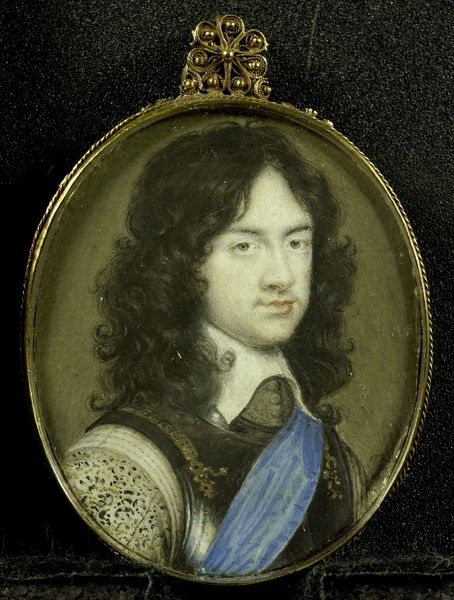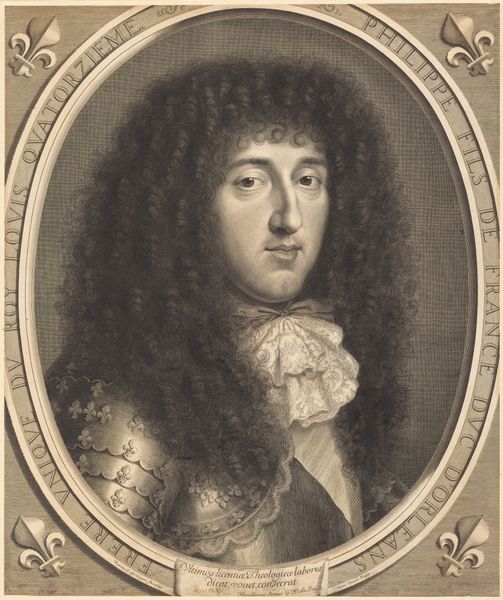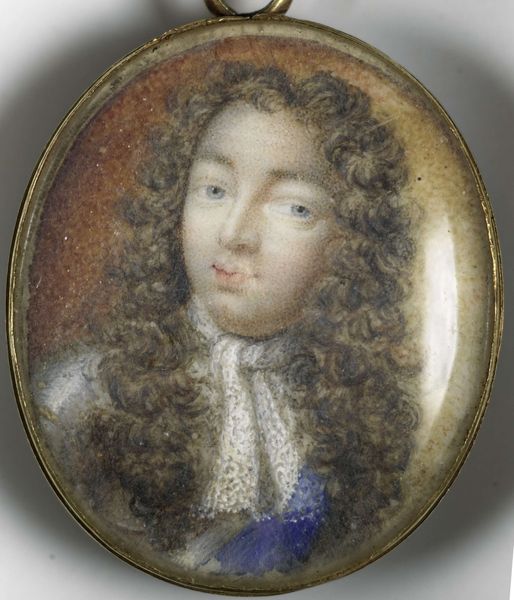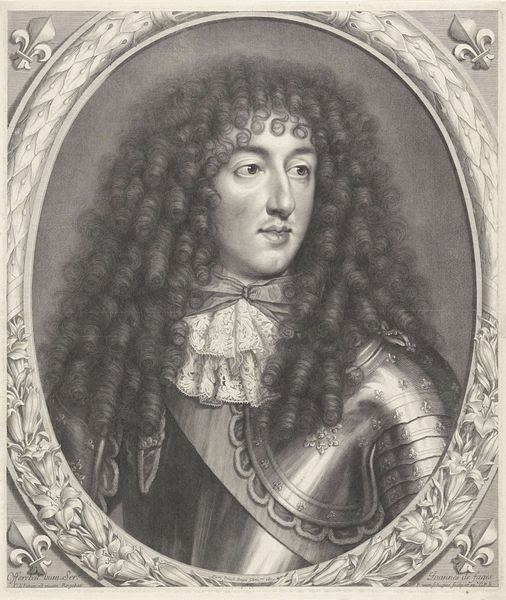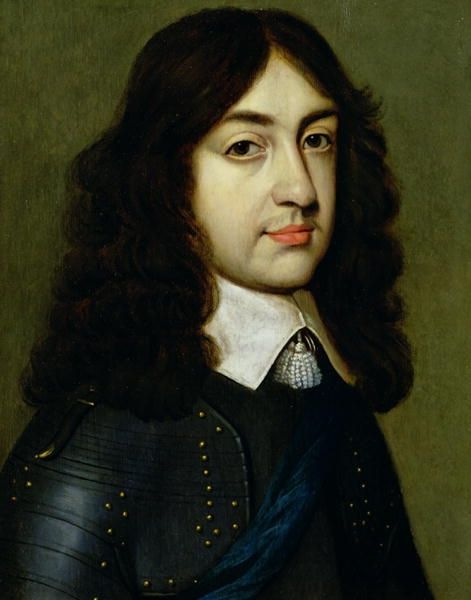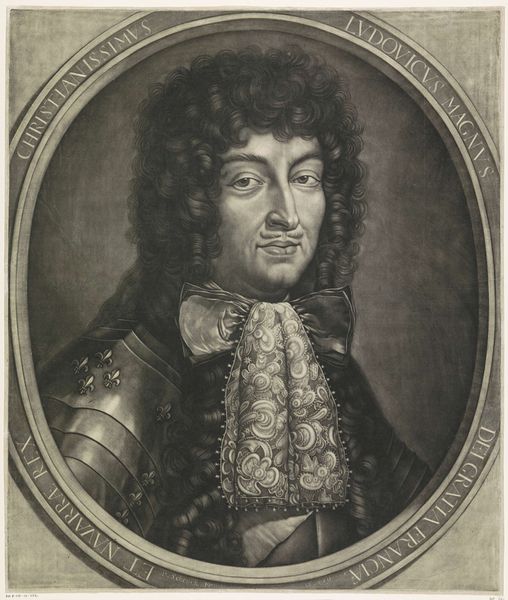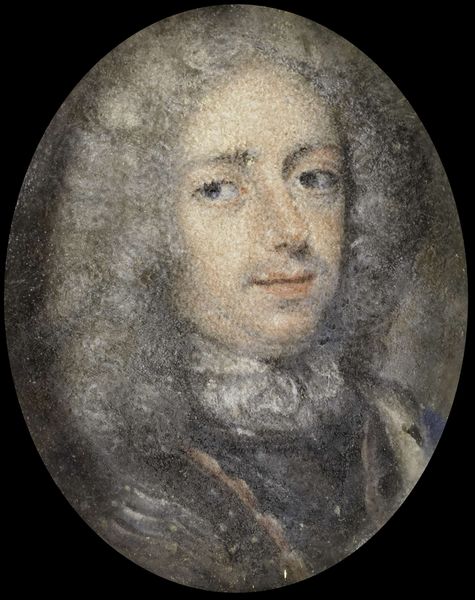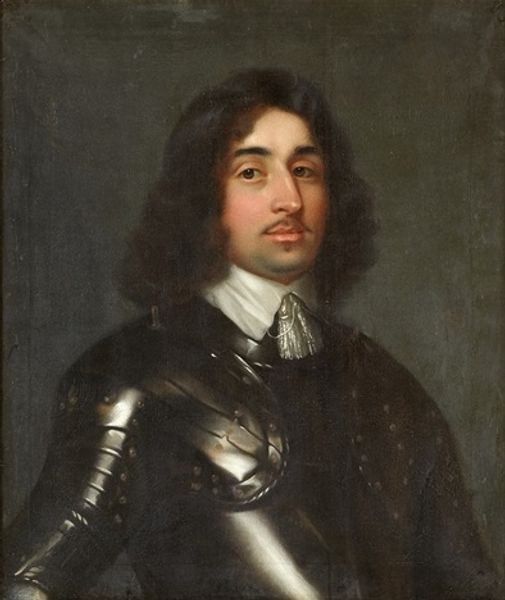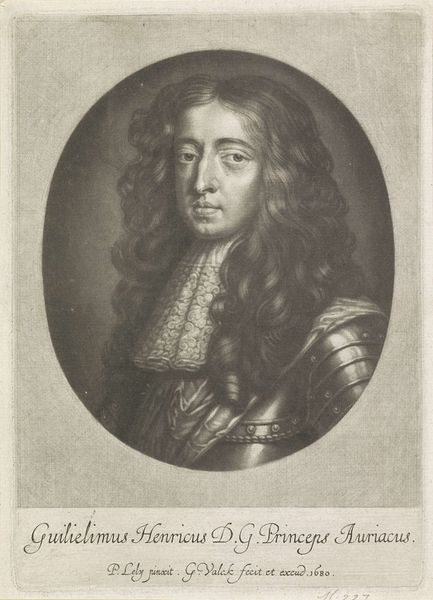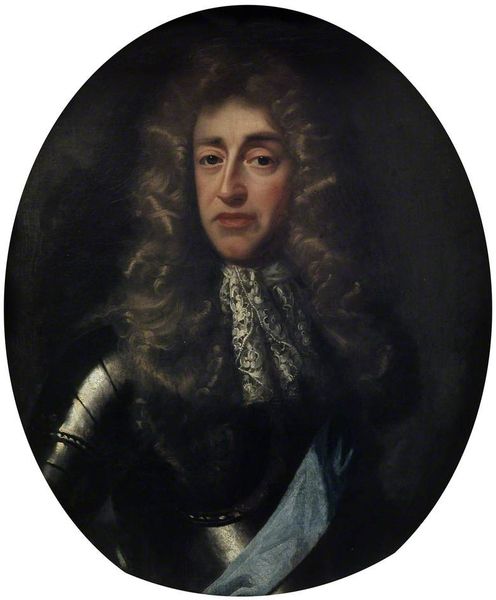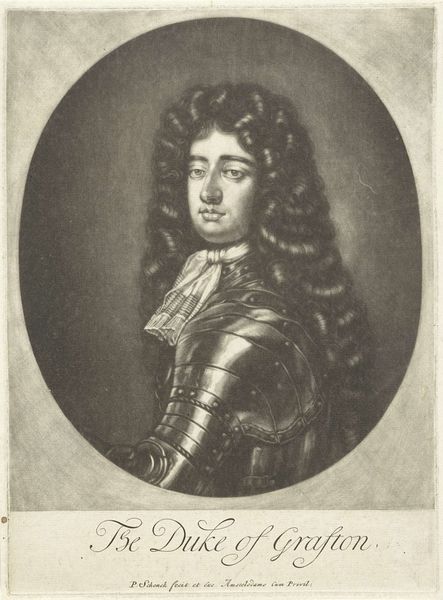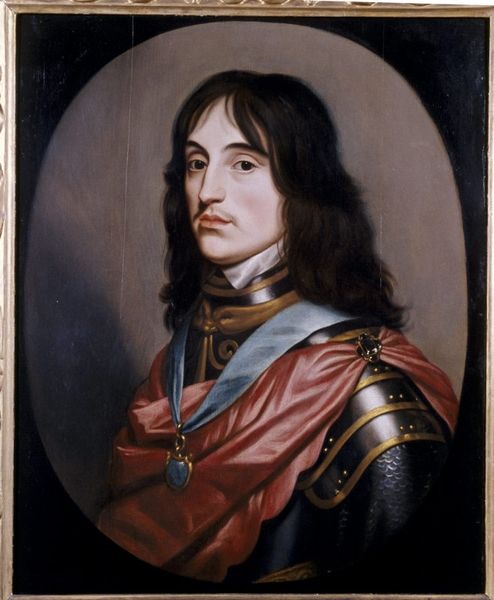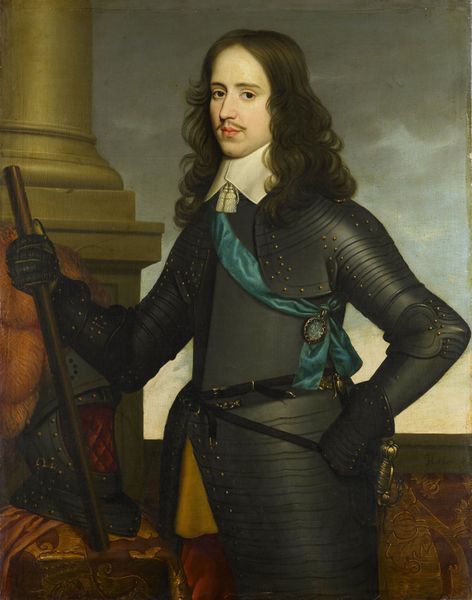
oil-paint
#
portrait
#
baroque
#
oil-paint
#
history-painting
#
academic-art
Dimensions: height 5.1 cm, width 4.3 cm, height 6.2 cm, width 4.5 cm, depth 1.1 cm
Copyright: Rijks Museum: Open Domain
Curator: Oil paint captures the likeness of a young Charles II, sometime between 1645 and 1655. It’s a surprisingly intimate, almost vulnerable portrayal, given the subject’s later role. Editor: It’s beautiful, although seeing him rendered in such detail within what seems like a locket—the intimate scale is at odds with the armour. How might we read his accoutrements through the lens of materiality? Curator: Think about the labour involved. This miniature, intended for close viewing, perhaps even for personal adornment, speaks volumes about the process. The gold embellishments aren’t merely decorative; they signify an intense process of both extraction and artisanal crafting. Consider who benefits from such work. What about the support, the panel itself; what materials were involved, how were they sourced and treated to ready them for painting? Editor: So, beyond pure representation, it's also a record of specific production, reliant on extraction and skilled craftsmanship. Curator: Precisely. Consider the pigements in the paints. Ultramarine, ground from lapis lazuli, signifies global trade networks and extraordinary expense. Each material component speaks to social dynamics. The lace, the metal, even the ground pigments – it all adds up. Editor: This is compelling. What were the social conventions surrounding art production at this time? It makes me reconsider my reading of his youth as a position between roles. Curator: Courtly production meant relying on networks for acquiring raw materials and sustaining workshops to be employed on large scale projects, something to research further. We can really delve into its meaning by tracing the journeys of these materials. Editor: I never thought of portraits this way. This shifted my focus on how resources can change interpretations, thank you! Curator: Likewise, seeing the production process illuminates historical understanding. It reframes the conventional view and suggests new inquiries into value itself.
Comments
No comments
Be the first to comment and join the conversation on the ultimate creative platform.
